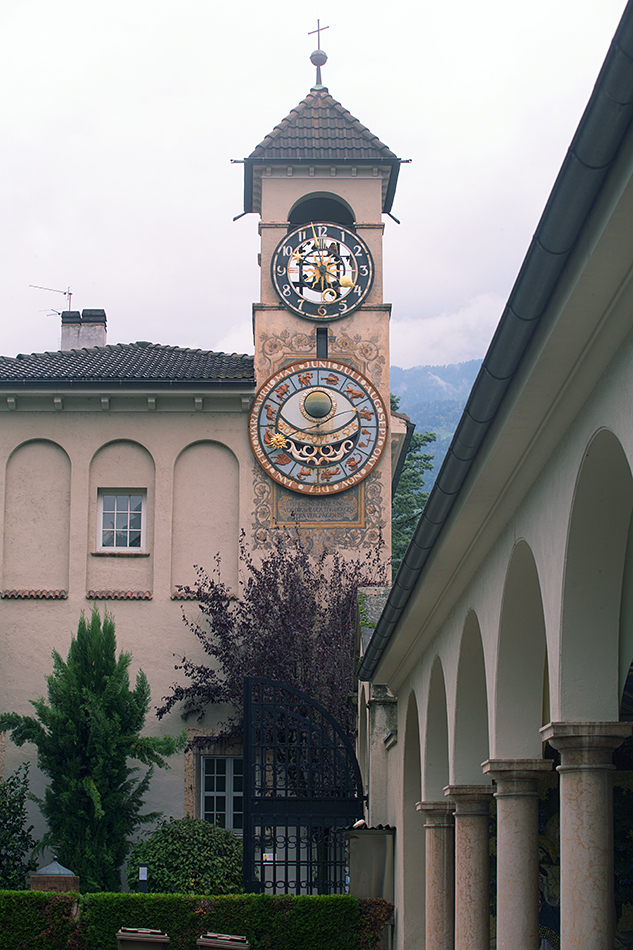
Although time and its measurement is a fundamental component of human life, a special type of clock which takes matters to the next level is the so-called
astronomical clock and whose purpose is not to measure time per se but to convey astronomical information and, in particular, the relative position of the
Sun and Moon as well as the zodiacal constellations and, in some cases, the position of the planets all as a function of time.
The oldest such effort to effectively emulate the overhead celestial sphere (ie a mini-planetarium) is the
Antikythera Mechanism which was discovered in 1901 totally by
accident by sponge divers off the coast of the Greek island of Antikythera. It has been dated to approximately 80 BC and it is believed to be the work of
Poseidonius of Rhodes. The Antikythera Mechanism is currently on display
at the National Archaeological Museum in Athens, Greece.
Note: Travel to northern Italy and as one approaches the Austrian border will reveal many towns which are bilingual with both
Italian and German in common use and including road signs, adverting posters and descriptive plaques to public buildings and areas. Two such examples are
the towns of Vipiteno and Merano which lie less than 10 km and 40 kilometers from the Austrian border, respectively, and are part of the autonomous region
of South Tyrol. As one approaches both of these cities, huge areas of land filled with apple orchards and vineyards will become evident while at the same
time stunning mountain ranges in excess of 3000 meters in height surround the valley.
The astronomical clock at Merano is quite unique, for it does not lie in a major plazza or form part of a main town tower. More specifically, the clock is
found immediately to the right of the entrance as one enters the town's cemetery ("Cimitero Comunale" in Italian and "Stadtischer Friedhof" in German) and
just past the gate. The cemetery was constructed in 1907 but no other information is available as to the architect behind the astronomical clock and which
is comprised of two dials. The simplistic upper dial displays the current time using a modern-day format where a 12-hr dial is employed. The more graphic
lower dial includes successive rings for the month and zodiacal constellations with a pendant for the Sun indicating the current constellation the Sun is
traversing (Virgo in the photo below). The innner section of the dial includes eight symbols and which include those for the planets Earth (extreme left
and right), Venus, Jupiter and Saturn.
Note: For a view of the astronomical clock using much greater focal length, please click
here and
here.
Note: For additional results involving astronomical clocks from around the world, please click
here.
|
Body: Sun Mass: 332,900 x Earth Mass Eq Diameter: 109.1 x Earth Distance: 149 million km RA / Dec: 23h 41m 41s / +89° 19' 51" Diameter: 32.16' Magnitude: -26.8 |
 |
Date: Sept 13, 2023 Location: Cimitero Comunale, Merano, Italy Equipment: Canon EOS 6D Baader BCF2 Filter Canon EOS EF 70-200mm f/4 L @ 70 mm / f8.0 Exposure: 1 x 1/125 sec ISO 250 RAW Image Format 5472x3648 Image Size Continuous Servo Mode Manual Mode Software: Photoshop CS6 Processing: Brightness/Contrast Resampling JPG Compression |